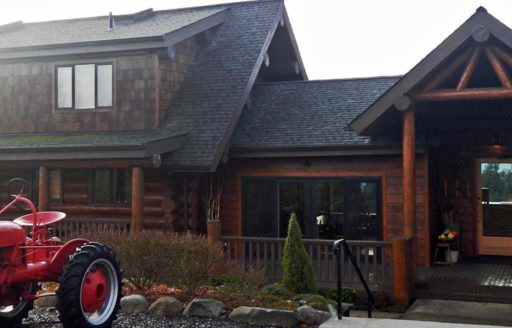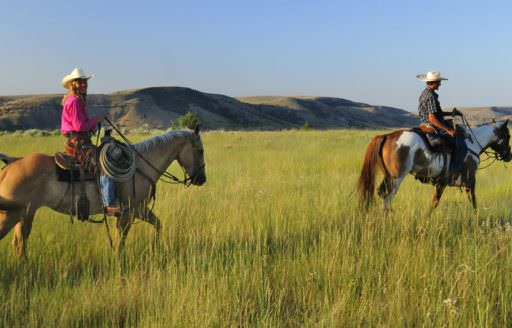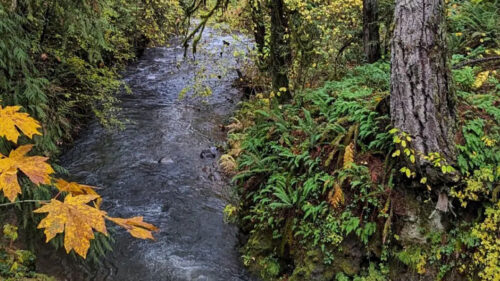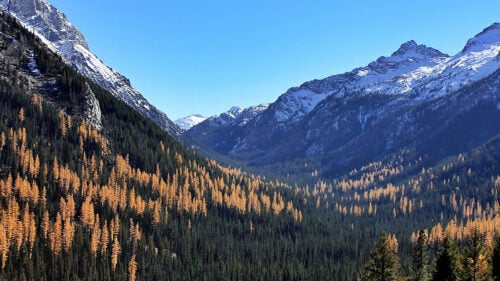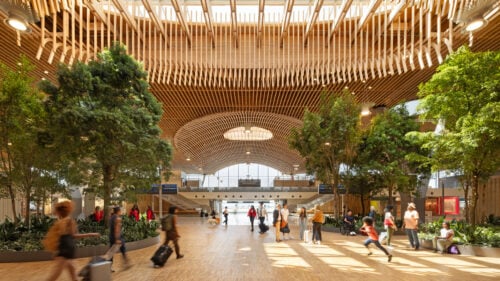When fifth-generation Oregonian Peter Hayes first saw the newly rebuilt Portland International Airport terminal in the summer of 2024, he recalls feeling a sense of awe.
The terminal’s arched ceiling was constructed largely with strips of sustainably harvested Douglas fir trees sourced from regional foresters — including Hayes’ forestry company Hyla Woods and two Native American tribes from Oregon — and now rises gracefully above thousands of daily passengers. “To me it has the same feeling of grandeur that European cathedrals do,” Hayes says. “Perhaps it’s a temple to Douglas fir.”
The Douglas fir — regal in any context — is the star of the newly reimagined terminal. Its arched, khaki-colored slats perch high above the concourse floor, designed as a fittingly grand tribute to Oregon’s official state tree. Here’s what makes the Douglas fir so special, where to see it on your travels and how Oregon’s signature tree is now an intimate part of Portland’s airport.
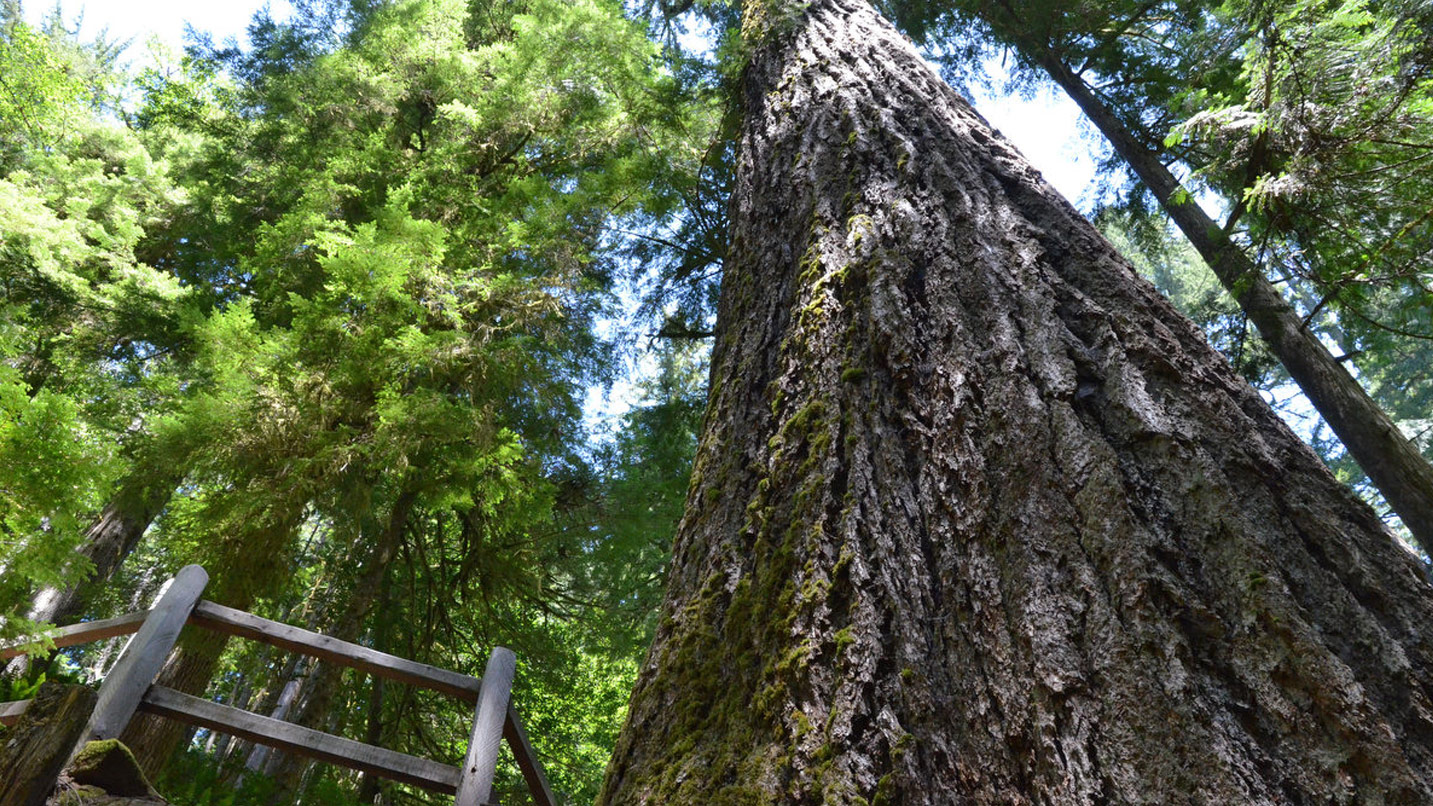
Why The Tree Is Important in Oregon
The Douglas fir was officially designated as Oregon’s state tree in 1939. It’s bountiful across the state’s western half, where it can be found from the Oregon Coast to the Cascade Range, as well as in the state’s far northeastern corner. The tree is noted for its thick bark, impressive height — up to 300 feet tall — and an uncanny ability to survive wildfire.
The tree has long been an important resource for indigenous tribes across Western Oregon. For generations, regional tribes have used its wood for fuel and to build lodgings, its pitch to seal canoes and its bark for medicinal purposes. Today several Oregon tribes manage their own forests — including two that produced wood for the brand-new terminal — and use the revenues from timber sales to provide tribal services.
The Douglas fir is also inextricably linked to Oregon’s industrial past. As far back as the 1870s, Oregon’s old-growth forests were harvested to build homes along the West Coast and, eventually, across the United States. The state became the nation’s top producer of wood products in 1938, a distinction it continues to hold today.
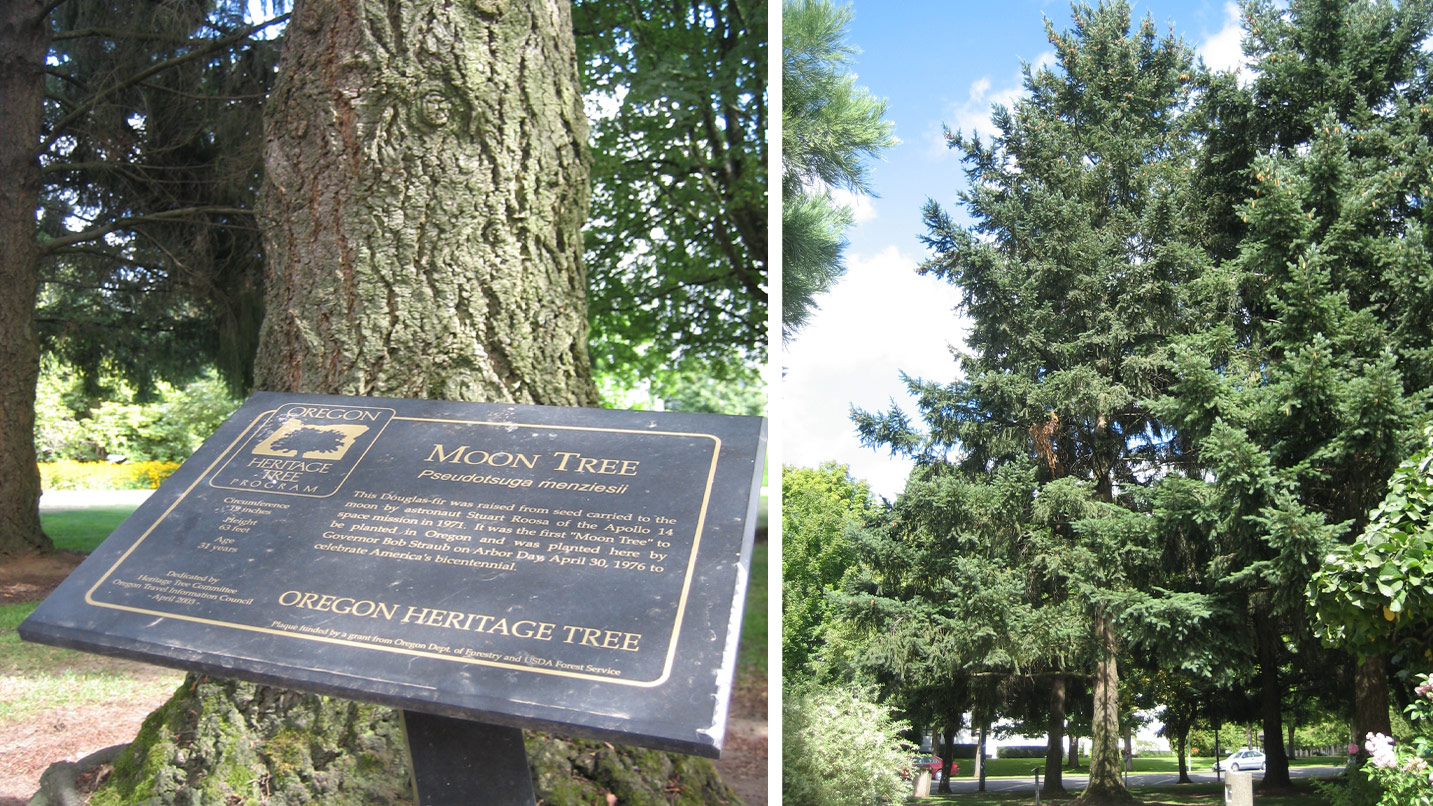
Admire Douglas Fir Trees in Their Natural Elements
Today most Douglas fir trees you’ll encounter in Oregon live and grow in younger forests that emerged after logging removed old-growth trees. They’re easily identified by their thick coats of bark, abundant needles and distinctive cones, where three-point leaves point downward from the scales. Enjoy up-close views of the tree with a few popular viewpoints and hiking trails.
One highlight is the so-called Moon Tree, which resides in Salem’s State Capitol State Park. The 63-foot tree, planted in 1976, grew from a seed that had been carried to space on the Apollo 14 mission five years earlier. Today it’s one of more than 50 landmarks that make up the Oregon Heritage Trees program, which celebrates notable specimens across the state.
Near downtown Portland, a towering Douglas fir rises nearly 250 feet along the Lower Macleay Trail in Forest Park. From the trailhead, follow the footpath for about 0.8 miles to the Witch’s Castle, an old stone building that once served as a rest stop. The largest publicly accessible Douglas fir in Portland, it sits about 500 feet before the Witch’s Castle and is noted by a trailside plaque. If you’re downtown for the holidays, visit Pioneer Courthouse Square for the annual tree lighting — the glittering beauty lit up with nearly 10,000 LED lights is typically a Douglas fir.
On the Oregon Coast, you’ll see Douglas fir just about everywhere. One massive example is on the Doerner Fir Trail between Coos Bay and Roseburg. There, a 0.5-mile trail in the Coast Range takes hikers to the base of its namesake tree. At more than 325 feet tall, it’s one of the largest coastal Douglas fir trees in the world.
Roughly 22 miles east of Tillamook in the Oregon Coast Range foothills, make a day of visiting the Tillamook Forest Center and the Student Planters’ Grove. The museum, open March to November, educates visitors on the history of the Tillamook State Forest and the importance of healthy forests through interpretive displays and a replica fire lookout. Nearby, the Student Planters’ Grove showcases a stand of Douglas fir trees planted by local schoolchildren between 1949 and 1973 after a devastating forest fire.
South of downtown Astoria, look for the trees as you hike in Lewis and Clark National Historical Park. A replica of Fort Clatsop — home to Lewis and Clark and their crew in the winter of 1805-06 — was constructed there in 2006 with Douglas fir trees donated by a Portland-based logging company.
Young Douglas firs, bearing a dense collection of branches and a sweet, citrus-tinged scent, also are popular as decorated evergreens in many homes. (Learn more about selecting, cutting and caring for sustainable Christmas trees.) And if you’re on the road, just look at the cars in front of you — the standard Oregon license plate has an image of the tree front and center.
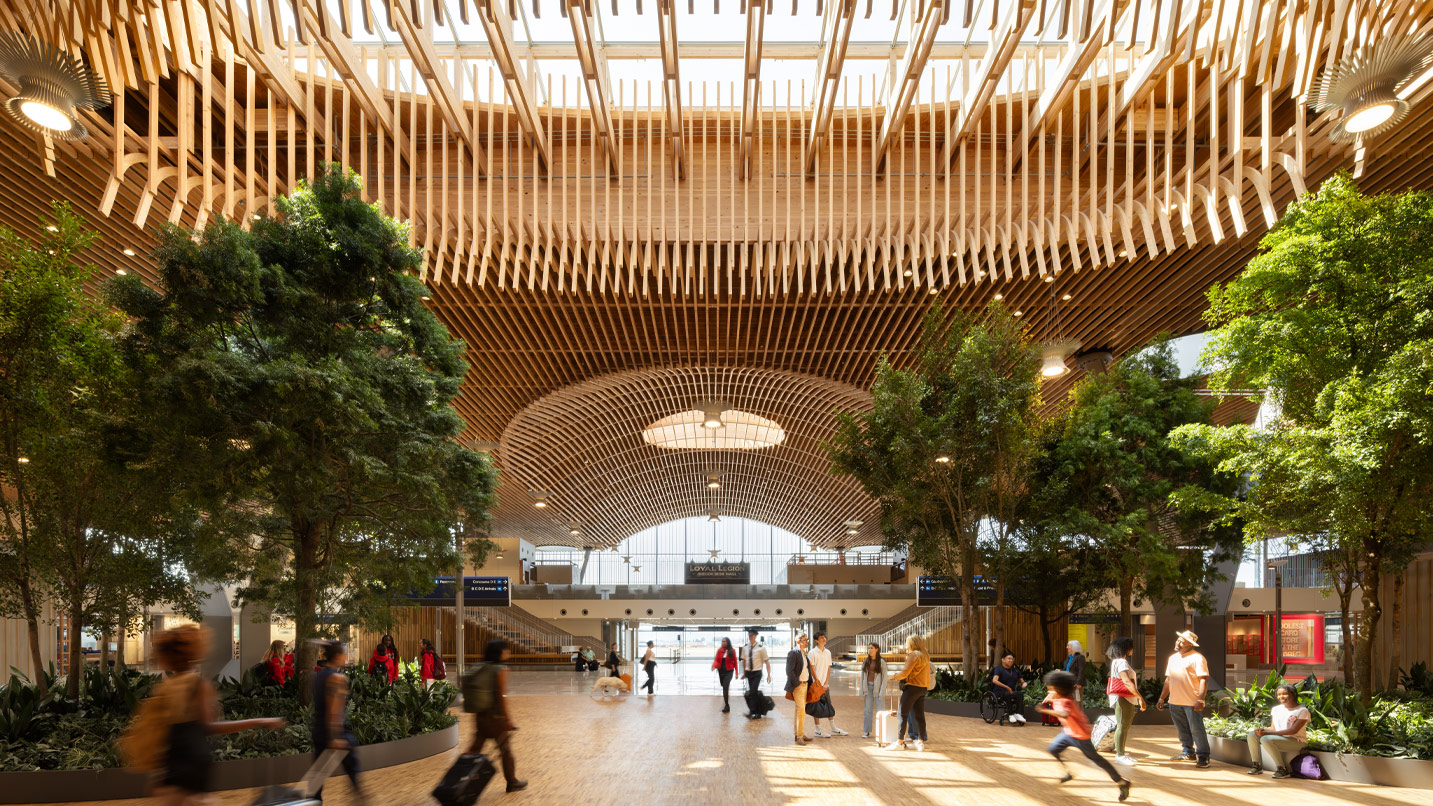
See Notable Buildings in Portland Made From Douglas Fir Trees
Views of Douglas fir trees aren’t limited to trails or viewpoints. In many cases, they make up and support buildings across the state. In Portland its wood was used for support beams, pillars and more at the World Forestry Center’s Discovery Museum, which is well worth visiting to learn about forestry in Oregon.
To experience one of the best examples of how beautiful Douglas fir lumber can be, head to the Portland International Airport terminal. Installed in 2024, nearly 50 skylights in the ceiling were designed to mimic sunbeams sneaking in through the forest canopy, and large steps encourage lingering. Scattered amidst it all, dozens of living trees dot the terminal. Visit the construction website — or keep an eye out for markers and maps in the terminal’s mezzanine, which help identify where specific wooden features were sourced from.
To complete the design, four Pacific Northwest tribal partners provided lumber from their ancestral lands. Those partners included the Coquille Indian Tribe and the Cow Creek Band of Umpqua Tribe of Indians, both of whom harvested wood and provided timber grown on tribal lands. For the ornate ceiling lattice, the Cow Creek Band supplied wood that had burned on its land in a 2019 wildfire. The Coquille Indian Tribe, which manages about 8,600 acres of ancestral forestlands in the Oregon Coast Range, provided sustainably harvested lumber for the skylights just past the airport’s security checkpoint.
Robin Harkins, natural resources director for the Coquille Indian Tribe, says the tribe’s participation in the project continues telling a story about stewardship that dates back thousands of years. “It highlights the people that have been stewards of the land since time immemorial, the care that they take to grow their trees in a sustainable way and how tribes think differently,” she says.



